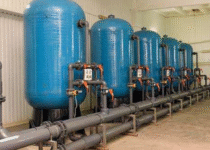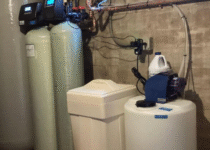Understanding Sewer Line Inspections: What Homeowners Really Need to Know
If you’ve ever had that unsettling gurgle coming from the drains or noticed water taking forever to disappear from the sink, you already know plumbing issues have a way of grabbing your attention fast. And not in a good way. While most of us don’t think twice about what’s going on beneath our feet, the sewer line is quietly doing some of the hardest work in the house. When things go wrong down there, it’s not just inconvenient — it can be messy, costly, and downright stressful.
That’s where sewer line inspections come in. Over the last decade, technology has made this process far more accessible for homeowners. No more digging up the entire yard just to figure out what’s happening. Today, small cameras, flexible scopes, and smarter equipment let professionals peek inside the pipes without turning your property into a construction zone.
But of course, one big question lingers for most people: how much does it cost, and is it really worth it? Let’s walk through that together.
Why Inspections Matter More Than You Think
Plumbing problems rarely announce themselves politely. A little backup here, a slow drain there — then suddenly you’re facing a flooded basement or a foul smell that just won’t go away. Sewer line inspections allow homeowners to catch trouble early: tree root invasions, cracks in old clay pipes, or buildup that’s narrowing the flow.
Think of it as a medical checkup for your house. You may not need it every year, but when symptoms appear, a quick look inside could prevent surgery-level expenses later on. Without inspections, many homeowners are left guessing, often paying for short-term fixes that don’t solve the root cause.
So, What About the Cost?
Here’s where things get interesting. Prices vary widely depending on where you live, the equipment being used, and the company you call. On average, the sewer camera inspection cost tends to range between $150 and $500. Some companies bundle it with other plumbing services, while others offer it as a stand-alone checkup.
For older homes — especially those built before the 1980s — these inspections can be worth every penny. Many of those properties still have outdated materials in the ground, and those materials don’t always age gracefully. A camera inspection might feel like an upfront expense, but it often saves homeowners from shelling out thousands for emergency repairs later.
Sewer Scope vs. Camera: Same Idea, Different Names
You may hear plumbers use the term “scope inspection” interchangeably with “camera inspection.” Both refer to sliding a small, waterproof camera attached to a flexible cable into the sewer line. The idea is simple: get a clear view of what’s inside.
For budgeting purposes, the sewer scope inspection cost usually lines up with camera inspection pricing, falling into that same $150–$500 range. But the value lies less in the label and more in the clarity it provides. Instead of wondering whether the smell is from a clog or a broken pipe, you’ll see it with your own eyes on a monitor. And that peace of mind? It’s tough to put a price on it.
What Influences the Price Tag?
It’s not just about someone showing up with a camera. A few factors shape the bill:
- Accessibility: If the sewer cleanout is buried or difficult to reach, the job takes longer.
- Pipe Length: A longer line means more time feeding the camera through.
- Location: Urban areas often have higher labor costs than smaller towns.
- Extra Services: Some plumbers include drain cleaning or offer repair estimates during the inspection.
If you’re buying a house, especially an older one, some inspectors recommend adding this service to your standard home inspection. Spending a few hundred dollars upfront is far better than discovering a collapsed pipe after you’ve moved in.
Finding the Right People for the Job
When you start Googling “inspection services,” you’ll see plenty of ads pop up. The best strategy is to look for licensed, well-reviewed professionals in your area. Many homeowners simply search sewer line inspection near me to narrow the field. But don’t just click the first result — do a little digging (no pun intended). Check reviews, ask neighbors, and make sure the company provides video footage of the inspection so you’re not just taking their word for it.
The Hidden Savings of Inspections
One thing that doesn’t get talked about enough is the money you don’t spend because of inspections. Imagine ignoring that slow drain for months, only to discover later that tree roots cracked your line. By the time you notice sewage pooling in the yard, the fix could cost upwards of $5,000 to $15,000. Compare that to a few hundred dollars for an inspection that would’ve spotted it early.
Plus, many plumbing companies offer maintenance plans. Getting inspections every couple of years ensures you’re ahead of any developing issues. It’s like catching a cavity before it turns into a root canal — uncomfortable at the moment, but far cheaper than ignoring it.
When Should You Get One?
Not every homeowner needs yearly inspections. A good rule of thumb is:
- Buying or selling a house? Absolutely get one.
- Older home with clay or cast-iron pipes? Every few years isn’t a bad idea.
- Noticing recurring clogs or backups? Schedule one immediately.
Even if your plumbing feels fine, if your property has large trees nearby, their roots can sneak into pipes over time. A camera inspection every few years is cheap insurance.
Final Thoughts: Peace of Mind Below the Surface
It’s easy to ignore what we can’t see. But sewer lines are one of those parts of homeownership that demand respect. A relatively small investment in an inspection can save money, stress, and even protect your property value down the road.
When you break it down, inspections aren’t just about spotting cracks or clogs — they’re about peace of mind. Nobody wants to wonder what’s lurking underground. And thanks to modern technology, you don’t have to.
So next time your drains start acting up, or you’re preparing to buy that charming old house across town, remember: a camera doesn’t just tell a story, it can save one.



